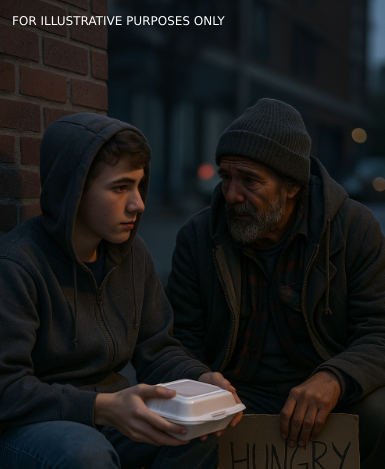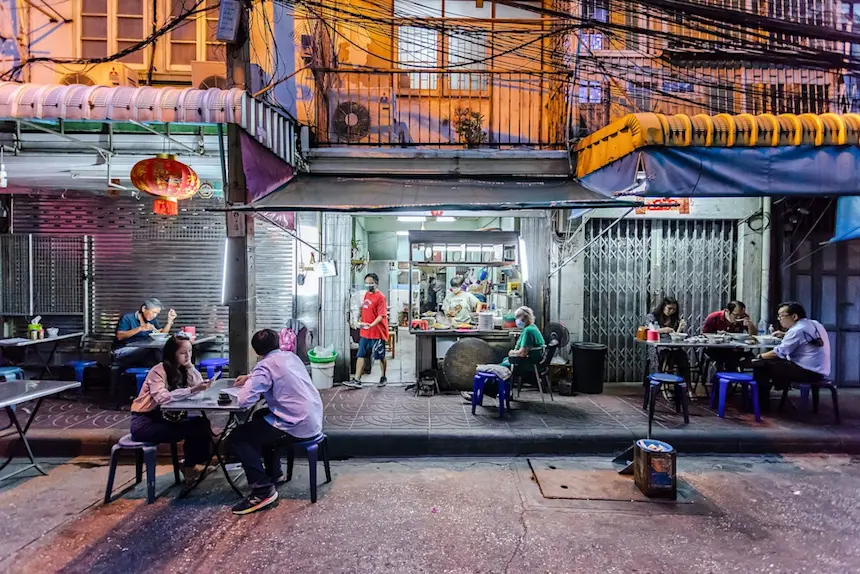
Eighteen-year-old Ryan had just finished basketball practice and was grabbing a late-night bite at a 24-hour diner near his neighborhood. It was cold outside, and the city felt even quieter than usual.
As he sat at his booth, waiting for his burger, he noticed a homeless man standing outside by the window — shivering, eyes fixed on the food inside, holding a cardboard sign that simply read, “Hungry.”
Ryan waved the waitress over. “Hey, could I get another plate, same order?”
He walked outside with the meal in a to-go box and gently handed it to the man.
“I thought you might be hungry,” Ryan said.
The man took the box with trembling hands. “You have no idea, son. Thank you.”
Ryan started to walk away, but something made him turn back.
“You okay?”
The man sat on the curb and motioned for Ryan to sit beside him.
They ended up talking for over 20 minutes.

The man’s name was Charles. He’d once been a teacher. Lost his job, then his apartment, after a string of misfortunes. No family nearby. He shared how hard it was being invisible.
“No one looks at you,” he said. “You stop being a person.”
Ryan listened.
Before he left, Charles said, “You’re the first person who’s talked to me today. You didn’t just feed my stomach — you fed my soul.”
That line stuck with Ryan.
He posted about the encounter that night. Not for likes, but as a reminder: “Be the person who sees someone. Sometimes that’s all it takes.”
His post resonated — thousands of shares, comments, messages. A local shelter reached out, hoping to locate Charles. A few days later, they did.
Thanks to the visibility from Ryan’s post, Charles was offered a bed, meals, and counseling. The shelter also launched a program called “See Me” — dedicated to giving the homeless not just help, but dignity.
Ryan and Charles met again a few weeks later — this time over a meal inside the diner.
Ryan smiled. “Glad you’re warm, man.”
Charles reached across the table. “I’m not just warm… I feel human again.”

















